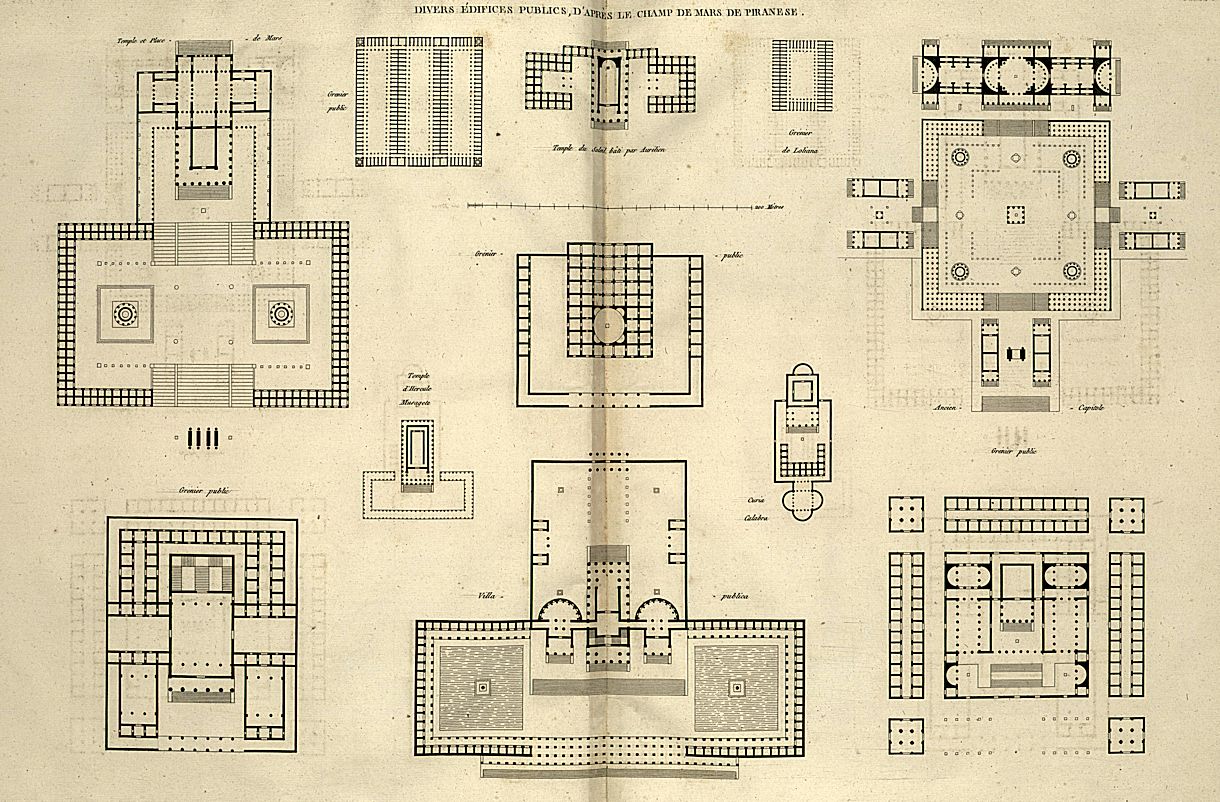Recueil et parallèle des édifices... | Divers Édifices Publics, d'apres le Champ de Mars de Piranese |
Less than 50 years after Piranesi's imaginary designs for the Campo Marzio, J.N.L. Durand appeared to provide a technical foundation for the wondrous world of the architectural fragment. In year IX o fthe revolutionary calendar, he published the Recueil et parallèle des édifices de tout genre, anciens et modernes. In this book, he shows all the buildings he finds relevant in world history, all of them drawn in the same way, to the same scale. Besides an almost Borgesian recital of Greek, Egyptian, American, Chinese, Gothic, Roman, Renaissance and European works of architecture, a number of pages are devoted to the work of Piranesi. Durand presents the Campo Marzio but, as apparently befits a school teacher, he smoothes out a few of the folds in Piranesi's work. The plan density, the compact succession of architectural worlds so characteristic of Piranesi's universe has disappeared in Durand's Recueil. Only buildings and building components remain, lined up impeccably in rows like school desks before the lesson begins. The jet-balck etched urban world of architectonic fragments blending together in Piranesi's Field of Mars is disentangled by Durand to form a system of parts which together form clear compositions. Piranesi's pathos and drama are caught by Durand in a disconcertingly simple Catesian universe of right angles, Platonic forms and severe repetition.
|
|
www.quondam.com/31/3128q.htm | Quondam © 2016.07.30 |
